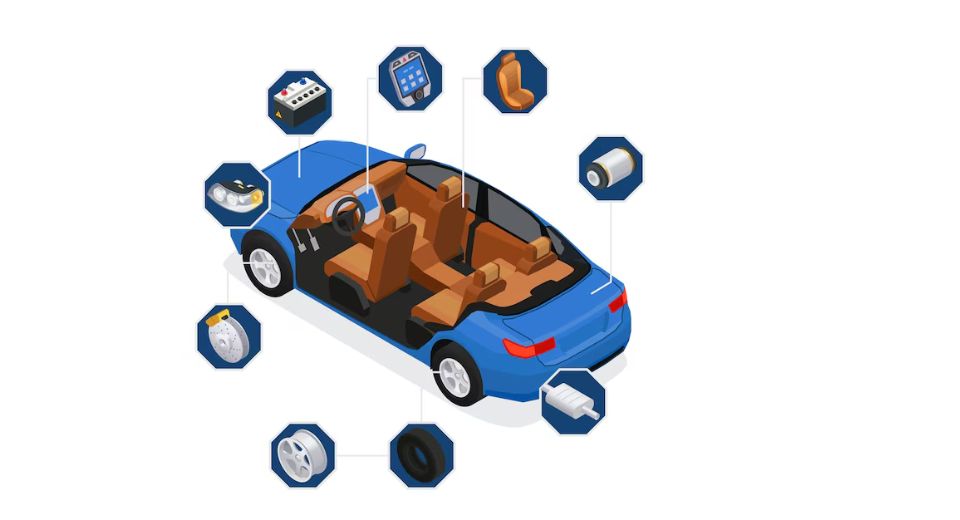
Feb 07, 2025

According to Metastat Insight, the global automotive plastics market is indeed growing at a rate that is significantly rapid. This is because the automobile industry needs lighter and stronger yet cost-effective materials. For years now, automobile manufacturers have relied on plastics in seeking to come up with more fuel-efficient emissions and good performance for their vehicles. No part of modern cars can be thought of without plastics, which are used under the conditions ranging from ease in manufacture up to superior versatility.
Global Automotive Plastics market is estimated to reach $28,773.22 million in 2025 with a CAGR of 8.0% from 2025 to 2032.
The area where plastics are being favored for use as alternatives to conventional metals is in parts of a vehicle. It started with exterior parts and gradually began to incorporate the interior components also, including bumpers, dashboards, door panels, and seating. Not only have plastics helped in making vehicles lighter overall, but it has also brought about the ability to enhance efficiency in energy utilization. By using plastics, it is possible to come up with lighter parts that also have advantages of better resistance to corrosion-an essential factor in ensuring the prolonged lifetime of cars.
One of the changes occurring in the automotive plastics market globally is the increasing trend of implementing advanced polymer composites into car manufacture. The advantages that these composite materials have concerning their performance in structural integrity and energy absorption make them greatly preferred by researchers and producers. With increasing safety standards for vehicles, composite plastics have emerged as a key material in automobile development. The ability of composite plastics to absorb more energy during a collision can protect passengers and reduce damage to the vehicle.
Other than performance, plastics have also improved the aesthetic part of automotive designs. Plastics can be shaped into almost anything. This frees up more ability to design some innovative parts on a vehicle which were previously challenging to achieve by using metal. In addition to this, color and finish variations also open themselves up to better possibilities. One of the great phenomenon associated with the automobile industry is plasticization, with color and texture variation enhanced above and beyond previous barriers. This way, car manufacturers could address the diverse demands set forth by automotive customers on every continent.
Environmental factors also affected the development in the global market for automotive plastics. Harsher regulations on emissions and fuel efficiency have forced automakers to continually upgrade to more sustainable materials. The transitional role of plastics in this change is important because their usage reduces the overall weight of the vehicle. This makes the usage improve fuel economy and carbon emission. Most of the plastics utilized in the auto industry are recyclable. Consequently, the damage caused by vehicle production and disposal is decreased in severity.
The automotive plastic market continues to adapt to the integration of electric vehicles within the global transport system. High-performance plastics are being urged into use as advanced technologies, and lightweight material applications maximize EVs' mileage and performance capabilities. These are the kinds of components that such vehicles need-simultaneously lightweight and having withstood uniquely electric powertrains' kind of challenges-because of that, plastics capable of meeting their needs at competitive prices are of prime interest for manufacturers who plan to expand on EV offerings.
Yet, despite plastics gaining popularity in the automotive sector, the market does face many challenges. Some of the major ones are fluctuating raw material prices, issues regarding the sustainability of certain plastic types, and demand for developing more advanced recycling technologies to reduce the problem of plastic waste. Other than these, biodegradable plastics and other innovative alternatives that can significantly minimize the ecological footprint of plastics will be areas of intense research and development over the next couple of years.
The global automotive plastics market, as per the portrayal of Metastat Insight, is a growing industry based on meeting the demands of modern automotive design and environmental sustainability. With changing consumer desires toward lighter, safer, and more energy-efficient vehicles, the demand for plastics in vehicle production is expected to increase. The ability of plastics to enhance the performance of the vehicle while offering significant savings in costs thereby makes it an imperative material during the evolution of the automotive industry. As time passes, plastic material innovation, recycling developments, and sustainable alternatives are going to drive this industry forward.
Drop us an email at:
Call us on:
+1 214 613 5758
+91 73850 57479